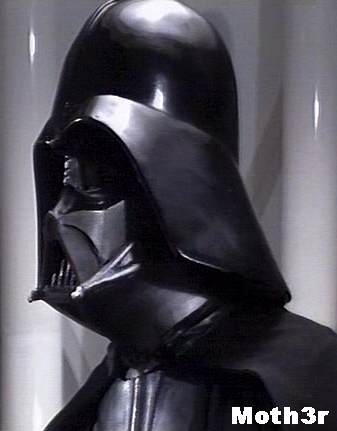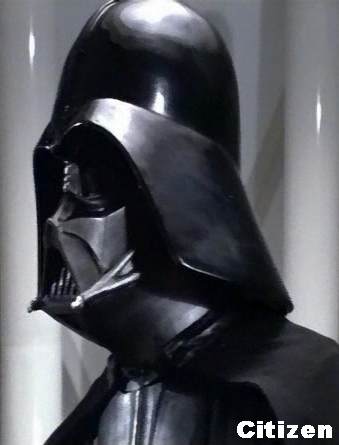- Time
- Post link
Ok just checked out the sample and it looks really good, at least on my computer. I would be willing to upload the sample to a.b.starwars if you dont mind Dr.M?
Major Update: 8/18/05
Current Status
Episode IV - New Hope: Finished - Distributed (v1.1 now being distributed to fix loss of second audio channel glitch)
Episode V - Empire Strikes Back: Finished - Distributed
Episode VI - Return of the Jedi: Finished - Distributing
Covers (by Erikstormtrooper):
http://www.erikstormtrooper.com/Rtw_ep4.jpg
http://www.erikstormtrooper.com/Rtw_ep5.jpg
http://www.erikstormtrooper.com/Rtw_ep6.jpg
(Full Tech Details at Bottom)
History:
I am am producing a new version of OT DVDs.
Out of fairness let me say up front I am not doing a new transfer. I really don’t have the setup to do anything better than what already exists, so I’m not.
I am creating a conversion to NTSC from Moth3r’s absolutely wonderful transfer which outstrips even the newest NTSC versions.
This is largely being done for my own benefit but release now seems required.
Before going any further, I will say, yes Moth3r knows what I am doing to his baby, and he seems to be largely ok with it.
But to be clear these will not be called Moth3r’s NTSC edition (his choice not mine). But in retrospect since this project has grown to be more than a simple format conversion, I absolutely respect that decision.
So since I am making hard work of something that is already extremely good, I have dubbed this “Reinventing The Wheel Edition” (RtW for short).
Why I am doing this:
Although I love PAL’s native higher vertical resolution, it’s 4% speedup (originally) was an issue for me. Also (and I don’t want to step on toes here) I don’t care for the washed out color in the original version. Foremost is that I DON’T OWN A PAL DVD PLAYER.
Now first the basics.
There are several ways to play a PAL DVD:
Obviously you can get a PAL or multistandard player.
Updated Tips for purists: If you want a true NTSC version of Moth3r’s discs you can use the Patch Method which uses IFOEdit to try and convince your DVD player that “this is not the PAL disc you are looking for”. It works on many units (but not all) and basically counts on manufacturers being cheap and using the same internal hardware internationally and just making tweaks for regions and formats. Compatibility with this varies.
Now if you augment this by demuxing the audio and video then using DGPulldown from 25 fps to 29.97 fps and remuxing/authoring you have a different beast altogether.
I saw this for the first time today and thought it was genius, what they are doing is using IFO edit to fool the DVD player into resizing the video to NTSC for you. The DGPulldown keeps the video at 25 fps on the disc but the DVD player performs telecining on the fly up to 29.97 fps for you (no I didn’t think that was possible either). The huge benefit is the audio does NOT have to be re-encoded. In fact nothing does. You’re just tweaking a bunch of flags and let the hardware do the rest for you.
This is perfect for Moth3r’s DVD’s since we know the audio to have been pitch correct to account for the 4% speed up.
Since this method would make a highly compatible version of Moth3r’s movie in NTSC, it’s almost a shame to not have done it originally… but I like overdoing projects (and it’s too late to go back now).
Finally you can re-encode (which is what I’ve done).
Since I do not have any raw avi files to work with, I am going from the public DVD version of these discs that everyone has access to.
Using VirtualDubMod or AVISynth, you change the framerate to 23.976 (NTSCfilm, just a bit over 1 fps slower than PAL), crop 72 lines from the top and bottom, resize to 720x360 and add 60 line borders above and below. Also the sound must be time expanded so it all syncs. That could be done in an afternoon to tell you the truth and was my original plan.
But why stop there?
As long as there’s filtering going on, why not improve the color, etc.


Yes the above is from an actual NTSC frames (after re-encoding). Still not any more difficult to do really.
Actually what you see includes a 4% reduction in the white point (to brighten the whites) and 25% boost in the Yellow and Green saturation.
Edit: Return of the Jedi required slightly different handling. Unsharp Mask was used to sharpen, Yellow/Green was boosted only 10%, but Red, Blue and Cyan were desaturated by 15%.
At this point I could explain the increased lines of resolution of PAL laserdiscs vs NTSC, but I’ll save that for the PAL transfer threads: Here’s Moth3r’s.
What is important to understand is that an anamorphic NTSC DVD of Star Wars (which is in 2.35:1 aspect ratio) can use up to 360 vertical lines for the movie. This is about 50% more lines than even the PAL laserdisc source.
Now ideally I would have raw video so I could resize up instead of down for the disc, and also I wouldn’t have to recompress previously compressed video, but that is not the case unfortunately.
ORIGINALLY I had every intention of adding left/right black borders and reducing overall size to prevent further loss of picture in TV overscan regions. The reasoning being that there is excessive cropping at times in the original disc. Public opinion (and lots of explainations) convinced me to drop that idea in favor of preserving as many lines of resolution as possible.
BUT what about the audio? If you keep reading all the posts to follow you will see there has been much debate about how best to accomplish this.
I finally gave up on giving up and will be using an NTSC audio rip from the Definitive Collection. [Thanks to Arnie.d] A little jiggery-pokery with a shoe-horn and you have wonderful PCM digital audio from laserdisc source (bye-bye analog tape that’s been sped up, pitch shifted, analog recorded, ripped, encoded, decompressed, slowed down, and pitch-shifted again (no kidding that’s where this was going)).
Final thoughts:
I am not doing menus (not really a need).
For those concerned about further quality loss in the re-encode process, a Constant Quality first pass indicated that I’m using about 50% more bitrate than is need for a Q of 30, so relax.
Release:
Yes please. Not waiting for Episode VI, contact me if you want to help.
Feel free to talk amongst yourselves.
-Dr. M
Source Material
Video: Moth3r’s DVD, originally from the French 1995 THX PAL Laserdiscs
Audio: Uncompressed PCM “Definitive Collection” NTSC, Pioneer DVL-919 to Canopus ADVC55 (DV - analog capture) [Thanx arnie.d]
Original Hardware (taken from Moth3r’s details):
Pioneer CLD-D925 Laserdisc player
Toshiba VT-728B VCR
Leadtek WinFast VC100 XP video capture card
PC: Athlon XP 2700, 1GB RAM
Re-Mastering Hardware:
Athlon XP 3500+, 1 GB RAM
Original Software (Moth3r)
Capturing:
btwincap drivers
VirtualVCR
Huffyuv codec
Post-processing:
VirtualDubMod
AVISynth
Encoding:
CCE 2.70 (video)
Remastering Software:
Vobs files ripped/demuxed merged: (various)
VirtualDubMod to filter and frameserve
Womble Mpeg Video Wizard to edit and sync audio
Re-encoding:
CCE SP 2.67 - 6 (+1) pass VBR
CCE SP 2.70 - 5 (+1) pass VBR (RotJ)
DVD Authoring:
DVDMaestro
For quality preservation SFV files (disc checksums) were generated with Easy SFV Creator and are available.
The SFV files should appear on the DVD. If it isn’t there (smack the guy that sent it to you), then check your disc using these:
ANH’s SFV v1.1
ESB’s SFV
RotJ’s SFV
Dr. M
“My skill are no longer as Mad as the once were” RiK
What’s the internal temperature of a TaunTaun? Luke warm.



Dr. M
A new release of Star Wars is like a box of chocolates, you never know what you're gonna get.




4 - 5 - 3 - 1 - 6 - 2
Discuss…
Guidelines for post content and general behaviour: read announcement here
Max. allowable image sizes in signatures: reminder here


Dr. M


Dr. M



Ooh, a laserdisc. The Cheat's playin' something on a laserdisc.
Everything is better on a laserdisc. Whatever happened to the laserdisc? Laserdisc!

Ooh, a laserdisc. The Cheat's playin' something on a laserdisc.
Everything is better on a laserdisc. Whatever happened to the laserdisc? Laserdisc!